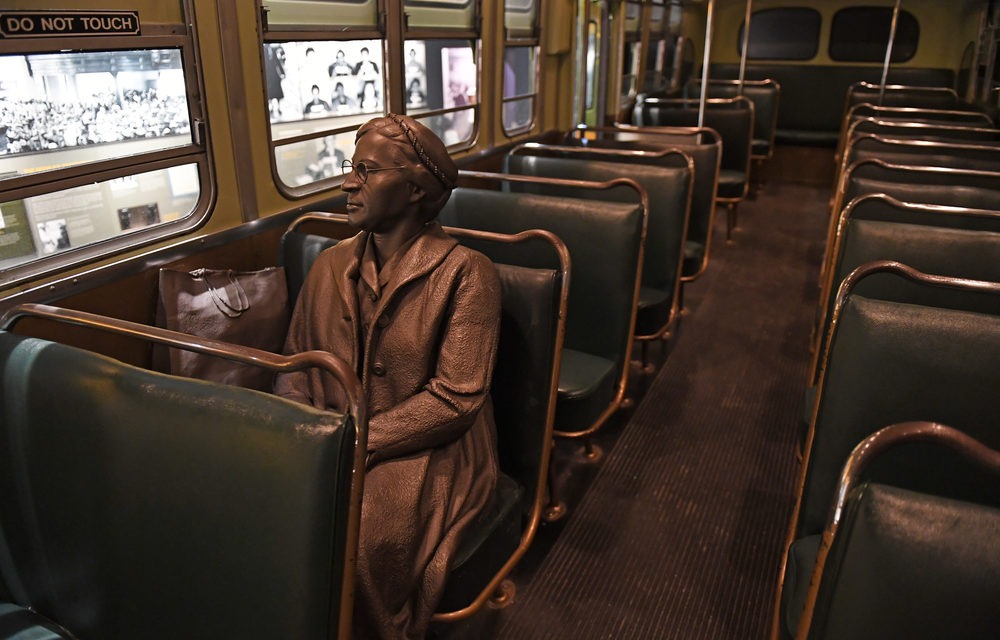Rosa Parks, an American activist, would have been 108 on Feb. 4
After graduating high school with Raymond’s support, Parks became actively involved in civil rights issues by joining the Montgomery chapter of the NAACP in 1943, serving as the chapter’s youth leader as well as secretary to NAACP President E.D. Nixon — a post she held until 1957. The couple never had children.
This was accomplished with a line roughly in the middle of the bus separating white passengers in the front of the bus and African American passengers in the back. When an African American passenger boarded the bus, they had to get on at the front to pay their fare and then get off and re-board the bus at the back door.
The city’s bus ordinance didn’t specifically give drivers the authority to demand a passenger to give up a seat to anyone, regardless of color. However, Montgomery bus drivers had adopted the custom of moving back the sign separating Black and white passengers and, if necessary, asking Black passengers to give up their seats to white passengers. If the Black passenger protested, the bus driver had the authority to refuse service and could call the police to have them removed.
Three of the other Black passengers on the bus complied with the driver, but Parks refused and remained seated. The driver demanded, “Why don’t you stand up?” to which Parks replied, “I don’t think I should have to stand up.” The driver called the police and had her arrested.
The police arrested Parks at the scene and charged her with violation of Chapter 6, Section 11, of the Montgomery City Code. She was taken to police headquarters, where, later that night, she was released on bail.
Members of the African American community were asked to stay off city buses on Monday, Dec. 5, 1955 — the day of Parks’ trial — in protest of her arrest. People were encouraged to stay home from work or school, take a cab or walk to work. With most of the African American community not riding the bus, organizers believed a longer boycott might be successful. The Montgomery Bus Boycott, as it came to be known, was a huge success, lasting for 381 days and ending with a Supreme Court ruling declaring segregation on public transit systems to be unconstitutional.
Photo caption above: Memphis, TN, USA – June 9, 2017: Sculpture of Rosa Parks inside bus at the National Civil Rights Museum and the site of the Assassination of Dr. Martin Luther King Jr.
Image Sources
- Rosa Parks sculpture: Shutterstock







